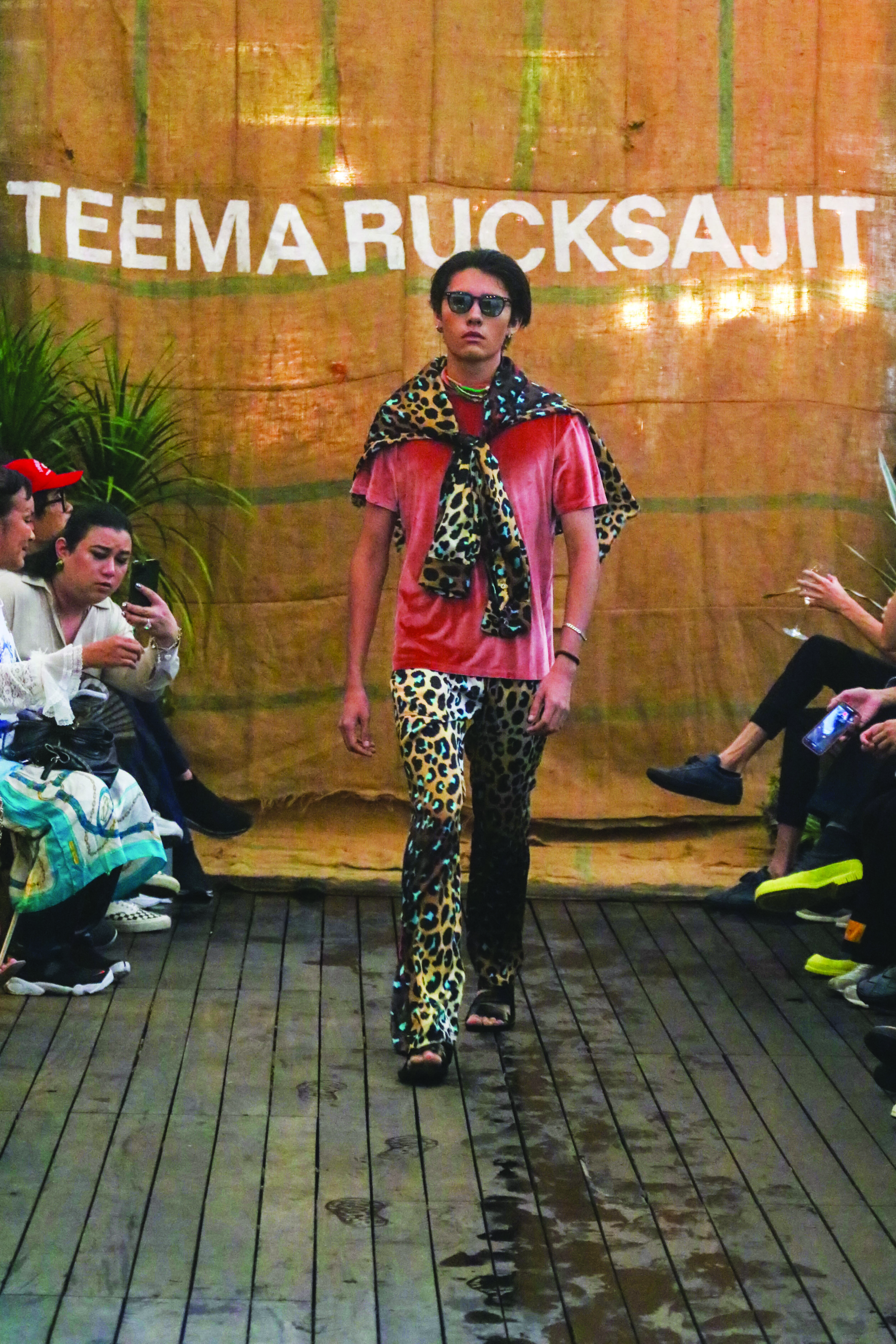The Red Envelope: Billkin and PP Krit’s Take on a Love Story Beyond the Grave
In a cinematic landscape saturated with remakes, reboots and sequels, you might ...

Your mother, Pichitra Boonyarataphan, founded one of Bangkok’s best known silk brands, PICHITA, in 1980. How has being her daughter impacted your career as a fashion designer?
I practically grew up behind the scenes of fashion shows, production floors, photo shoots and at my mother’s office. Being with her, I saw the inner workings of a fashion brand while gaining invaluable insight into how her target audience thinks and spends. Through her, I got to meet designers, stylists, producers, and other creatives, some of whom I still collaborate with today.

On the other hand, do you feel like being so strongly associated with your mother can sometimes be a hindrance?
I’m more focused on who I want to become than who I want to impress. That means being clear about my intentions, staying true to myself, and not getting lost in the world of comparisons.
Regardless of my background, I still believe in working hard and smart. I believe in laser-focused execution and sharpening your weapons by constantly honing your craft. I believe in being strategic rather than manipulative, in leveraging rather than using, in connecting and collaborating. I believe that energy is a form of currency, and I am mindful where, and with whom, I spend it.





Tell us more about your solo brand, TEEMA RUCKSAJIT.
I saw that few Thai brands were working with silks for basic everyday staples. Many consumers I spoke to wanted simple silk tops that are not very common in Thailand unless you’re buying higher end brands, which means a heftier price point. Seeing this gap in the local market, I set out to create things that were beautiful and affordable without compromising on quality.
While my “Signature-Silk” collection consists solely of plain and printed silks, other product lines feature a mix of fabrics—primarily natural fibres such as Tencel, linen, and cotton—using less plastics wherever possible. I want to encourage quality products over fast fashion, so attention to detail really matters.
The designs are unisex, gender-inclusive, and accessible to everyone. All pieces can be mixed and matched however you like.



Do you feel Thai designers have a distinct and original voice?
I feel that the older generation of Thai designers, from the same time as my mother, seem to have a stronger, more distinctive voice than some of today’s designers and brands. However, I think this is simply because the landscape has evolved so much and with it, brand missions. Nowadays it is more about sell-through, and social media and influencers are the major source of trends. Greater commercialisation has perhaps meant greater compromise on originality. I think it is important to distinguish and clarify the term ‘designer’ from ‘brand’ and understand the intention.
However, if by “originality” you mean having your own voice, I believe it is still possible to be original. You may share similar values with others in the same space, but the magic is in the execution. Your detail, your unique touch, is what allows you to create and re-create differently.
What are some of the challenges facing aspiring Thai fashion designers?
Mainly financial. The system makes it challenging for most creative entrepreneurs to make a good living out of what they love to do—especially as not enough value is given to the fields of arts, craft, and design. Mindset is another challenge. As a culture we are more passive than aggressive. The hustle mindset is perceived differently here than, say, New York or London.
What do you think is missing from the Thai fashion scene? What are some of the steps we can take to bridge that gap?
Being a jack of all trades is essential, a quality that hasn’t been so widely cultivated in the local fashion scene. The either/or single vocation mindset can be limiting when operating in today’s world. It is great to excel at one thing, but I trust it is more beneficial to widen one’s skill set.



Most importantly, I believe we must become clear and honest about our intentions and the impact we want to create in this space. Asking ourselves questions like, “Do I like the idea of being a designer and owning a brand—or do I want to design something? If money, fame, and glamour were not part of the equation, would I still enjoy this? Can I truly bring something to this space that will benefit people? Am I willing to work hard to always excel and be resilient? What does creating mean to me?”
Being able to answer these questions authentically, without fear and conditions, is the first step we can take towards greater understanding of the spaces we belong to, and how our creations can genuinely serve others.
Visit TEEMA RUCKSAJIT for more information.
In a cinematic landscape saturated with remakes, reboots and sequels, you might ...
These top 5 barber shops in Bangkok are where gentlemen can elevate ...
Must-have gadgets for kids in the Y2K are, predictably, making a comeback ...
While traditional TV shows are serving us endless boy-meets-girl tales. Thailand has ...
Stay ahead of the curve with these three must-visit new restaurants in ...
See how Kim Steppé’s early passions, family values and entrepreneurial spirit continue ...
Wee use cookies to deliver your best experience on our website. By using our website, you consent to our cookies in accordance with our cookies policy and privacy policy